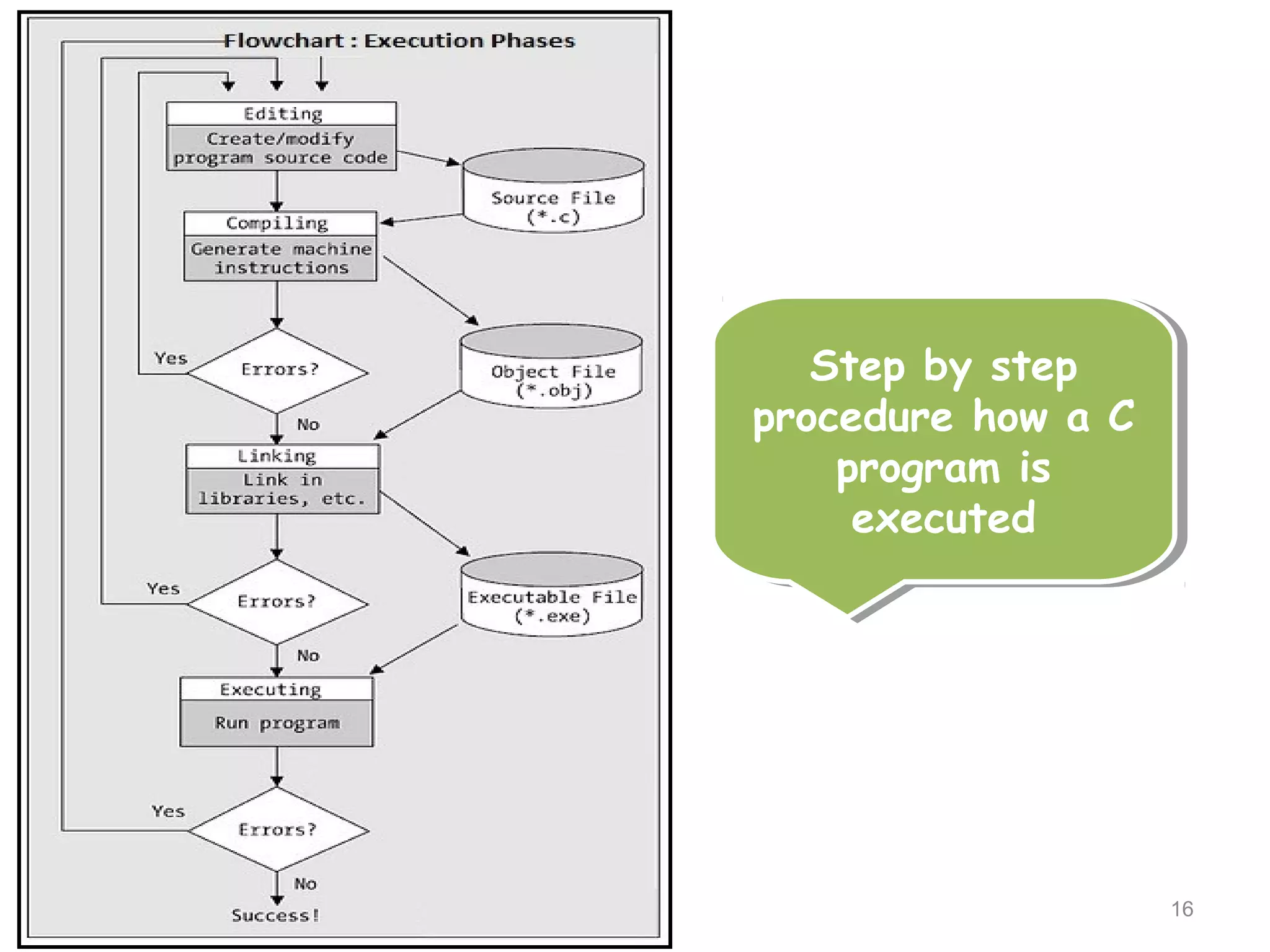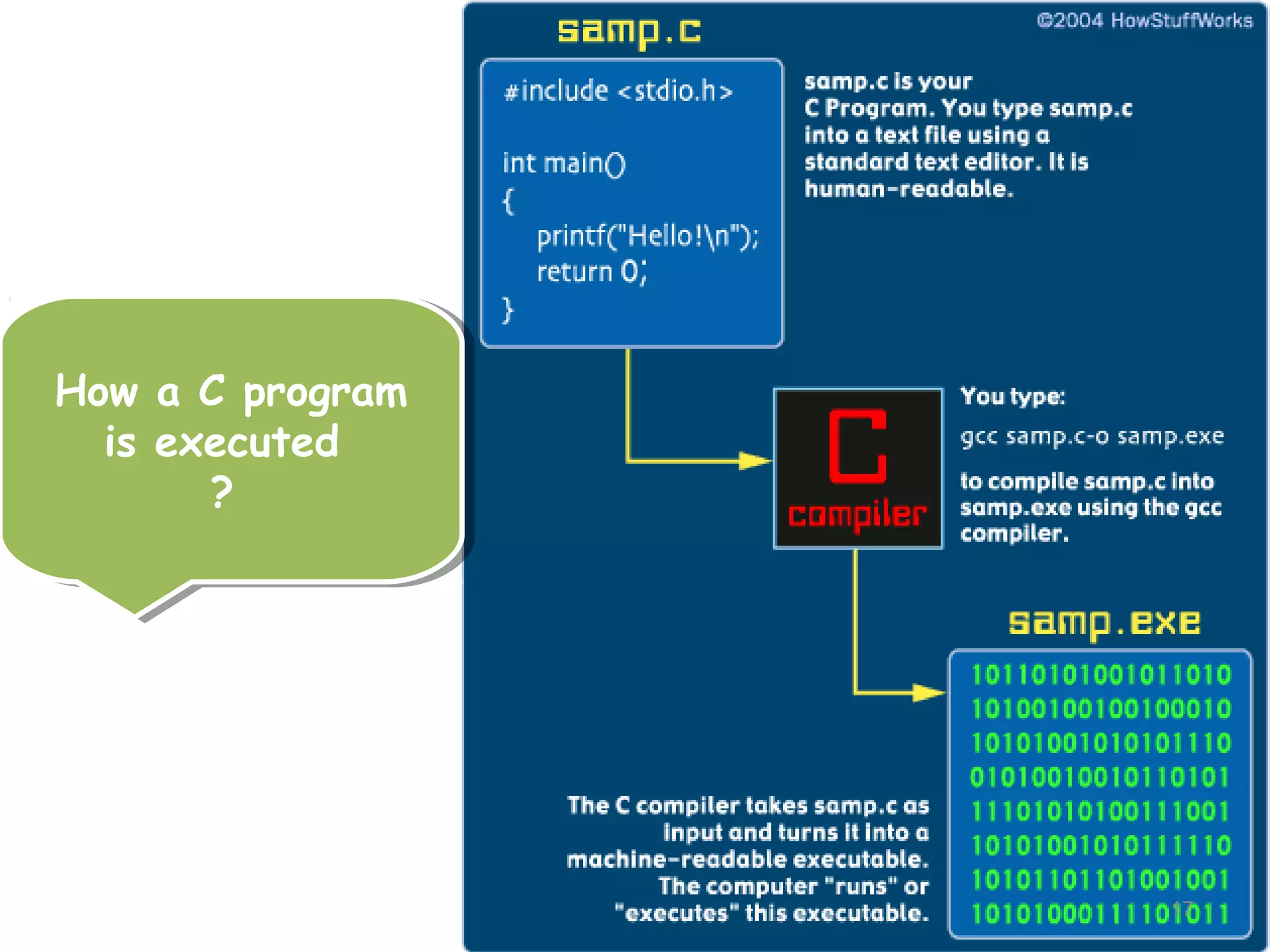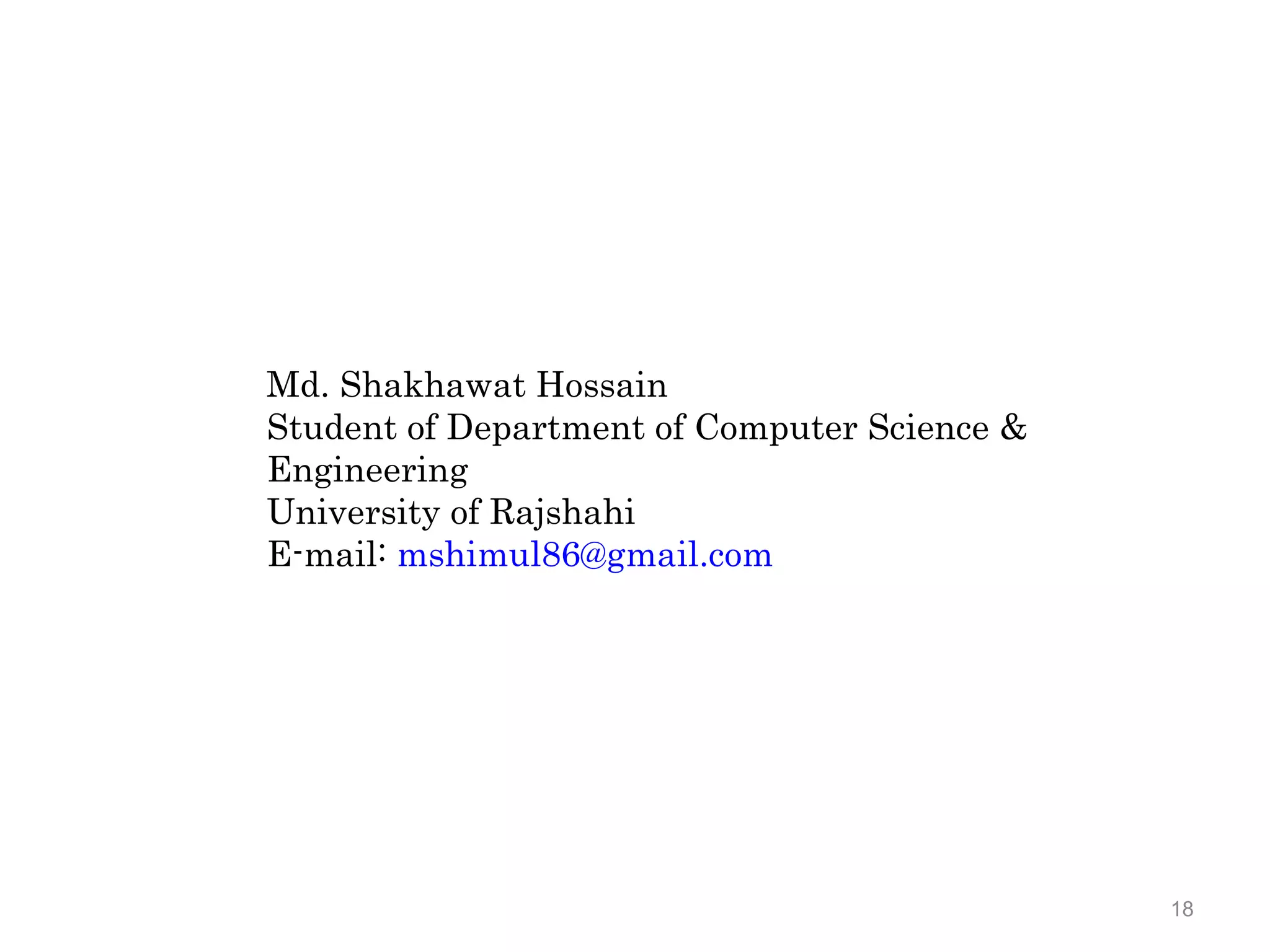The document provides an introduction to the C programming language, detailing its history, strengths, weaknesses, and basic structure. It highlights C's portability, efficiency, and robustness, as well as its procedural nature and ease of understanding. Furthermore, it outlines the execution process of a C program in three phases: creating source code, compiling, and linking.
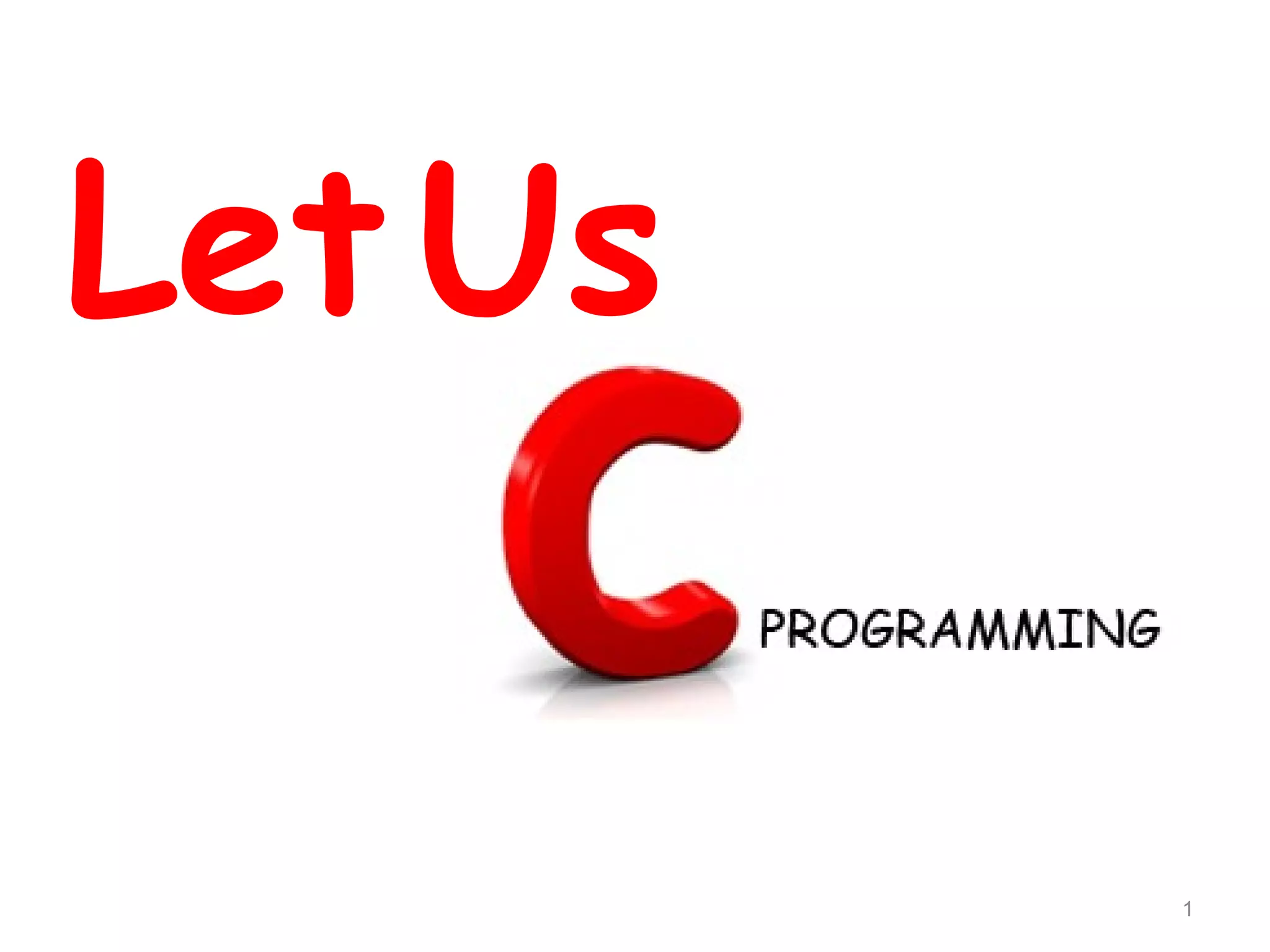
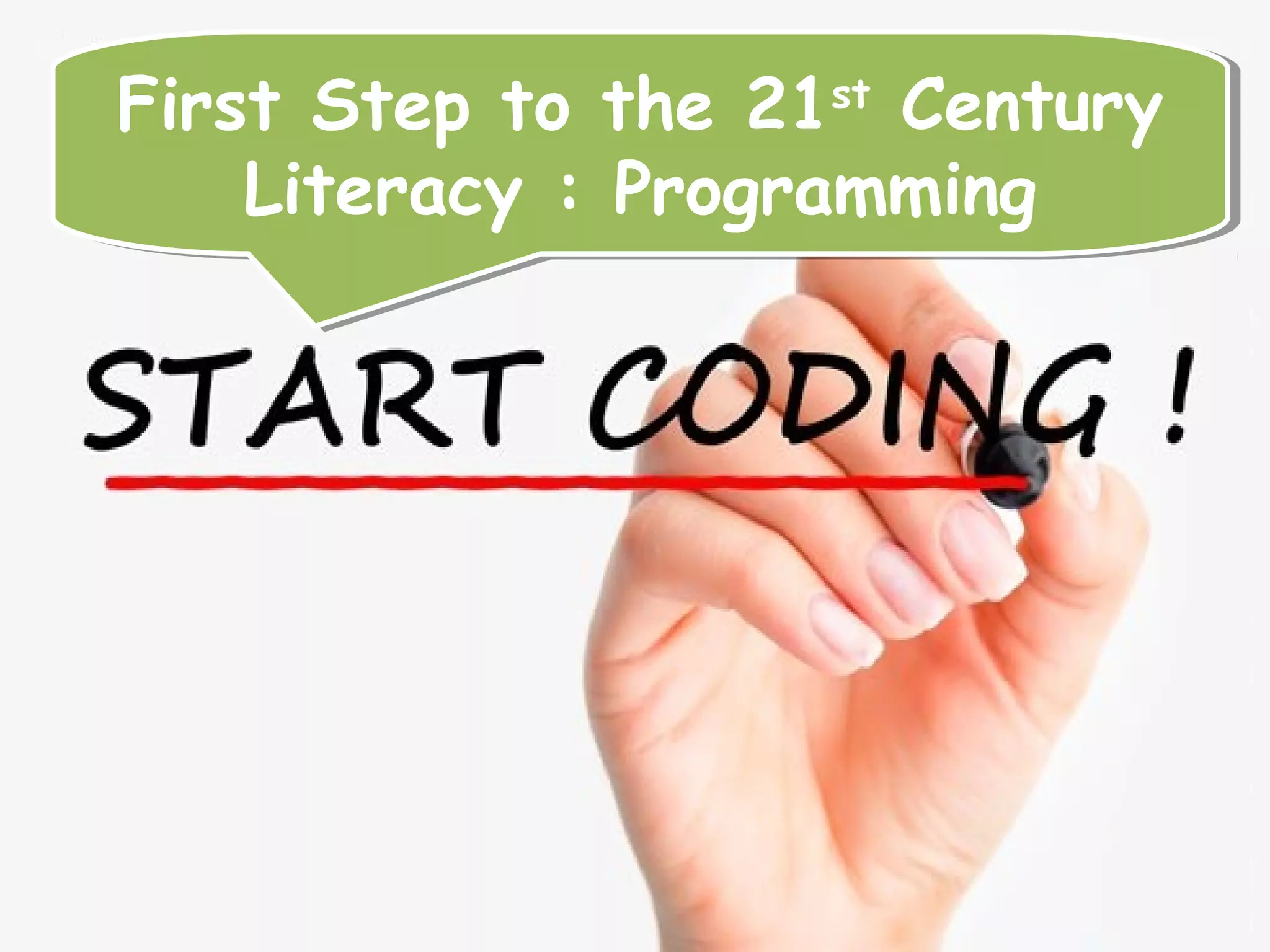
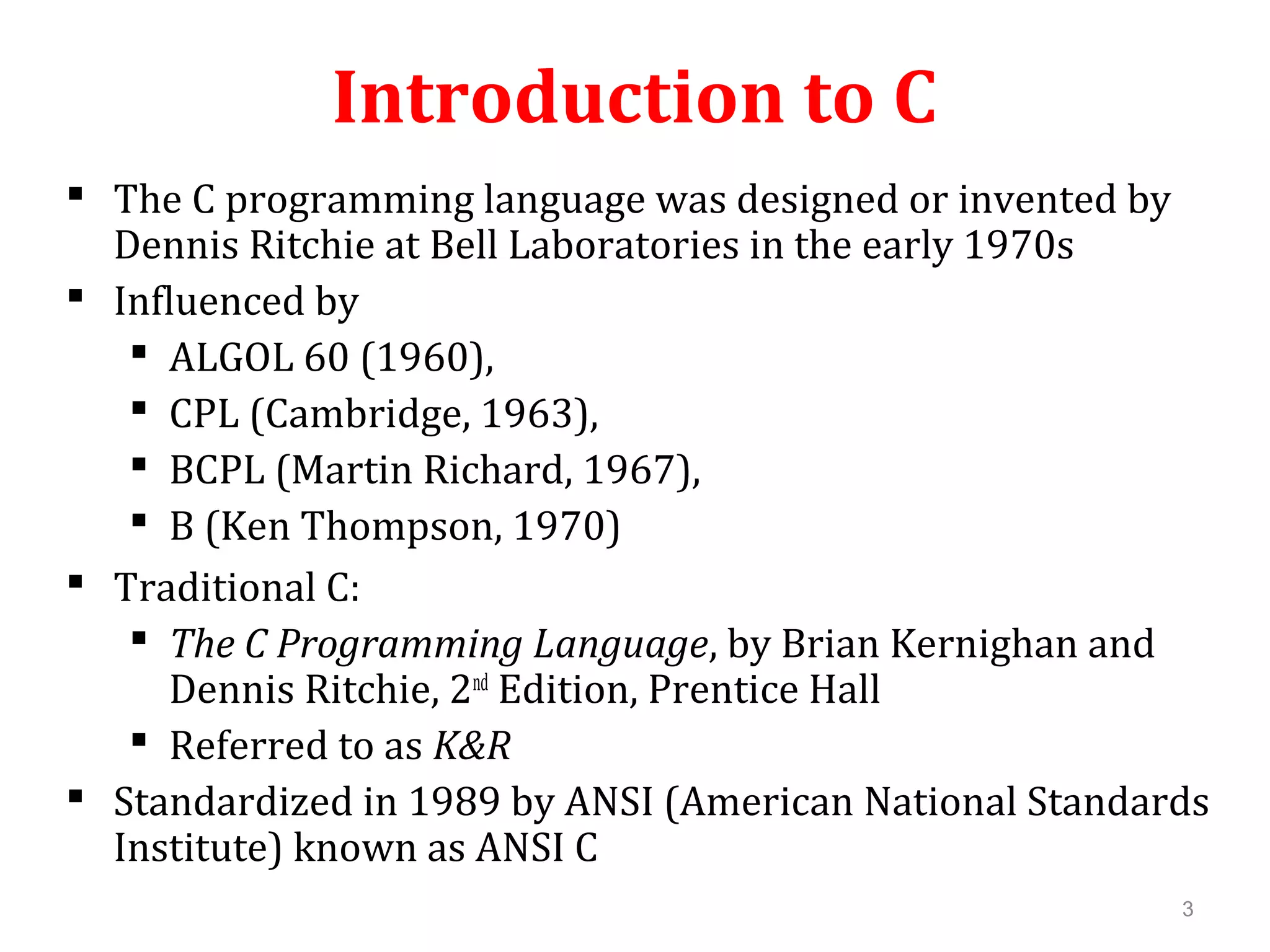
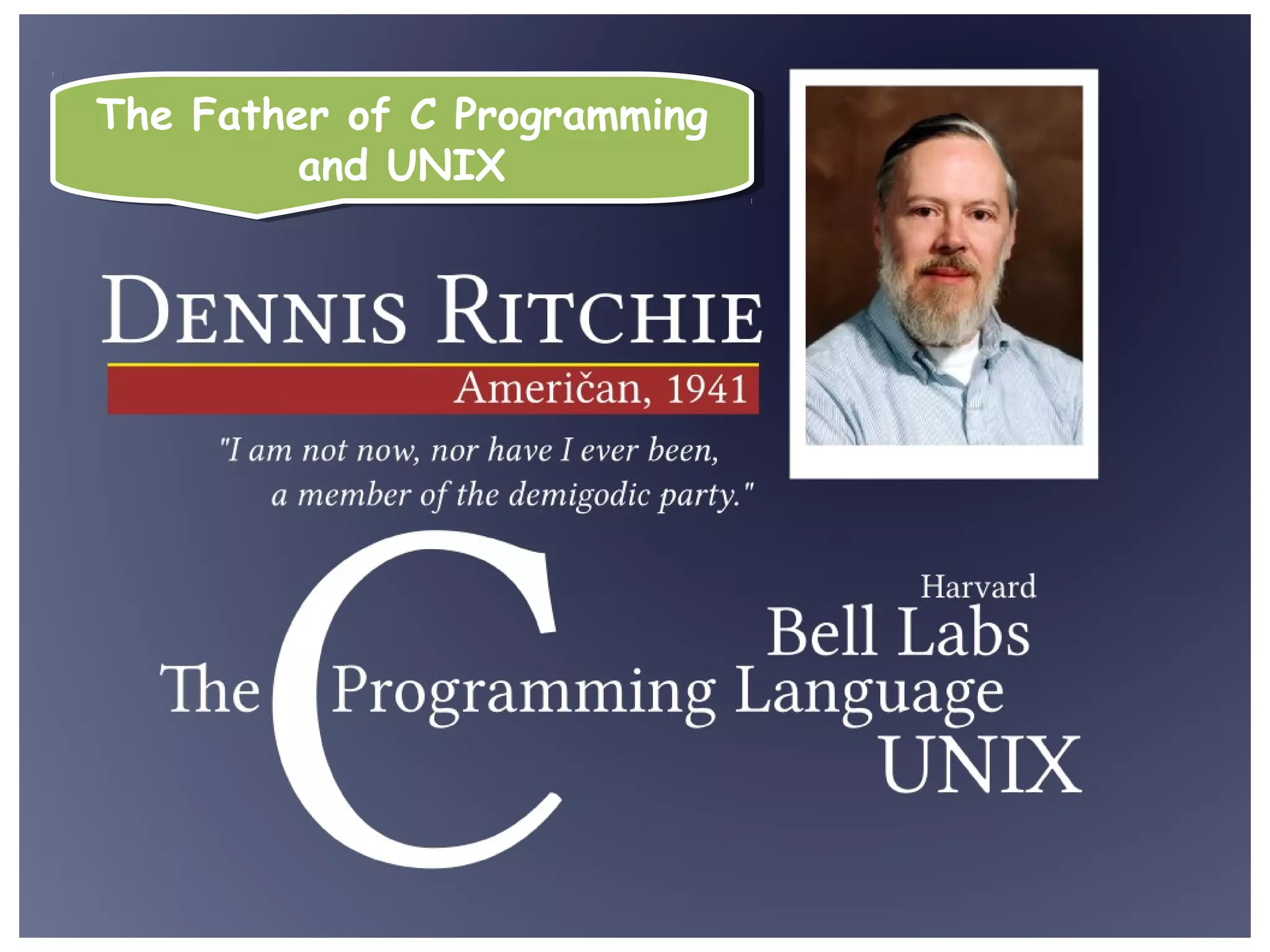
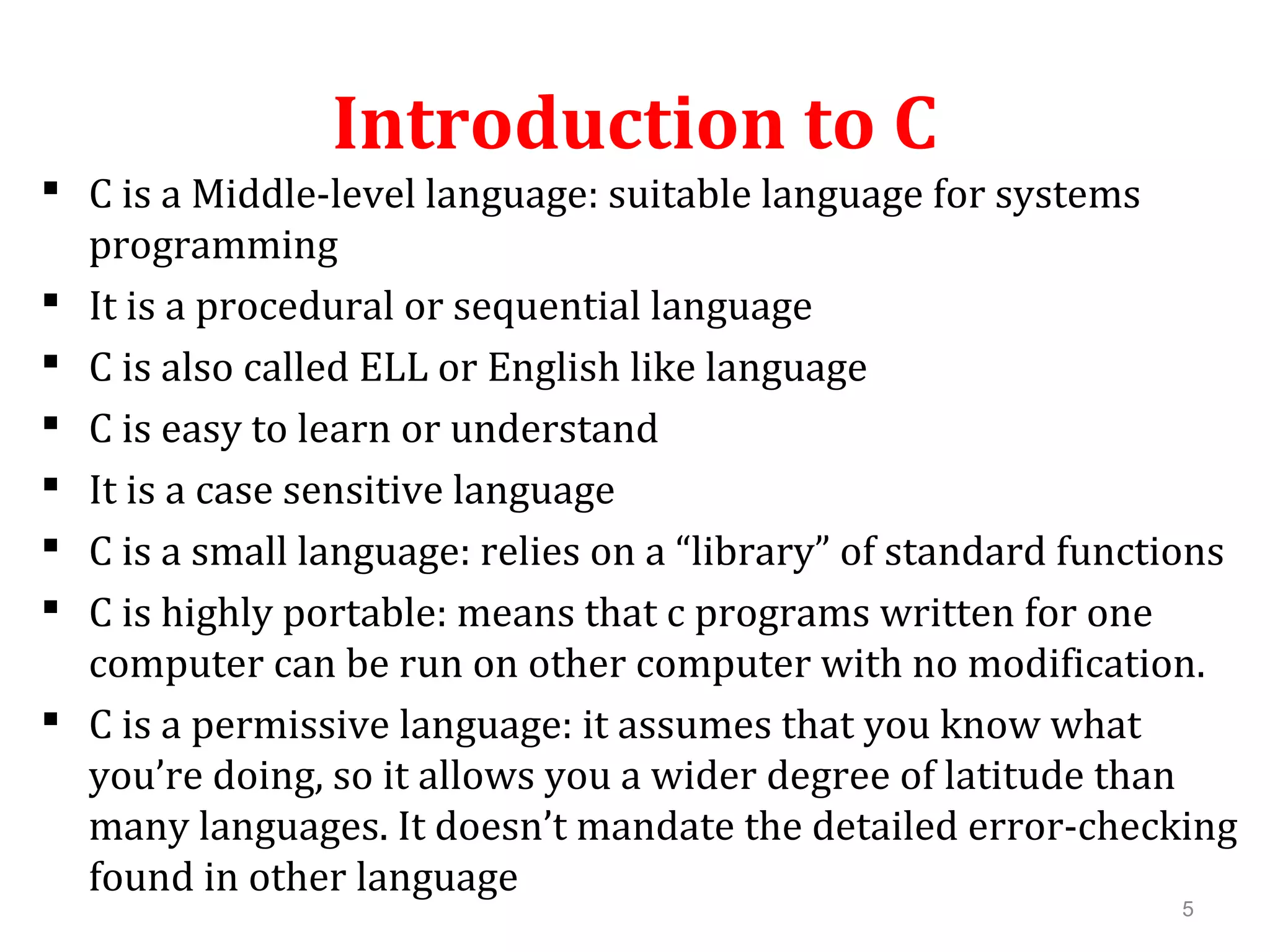
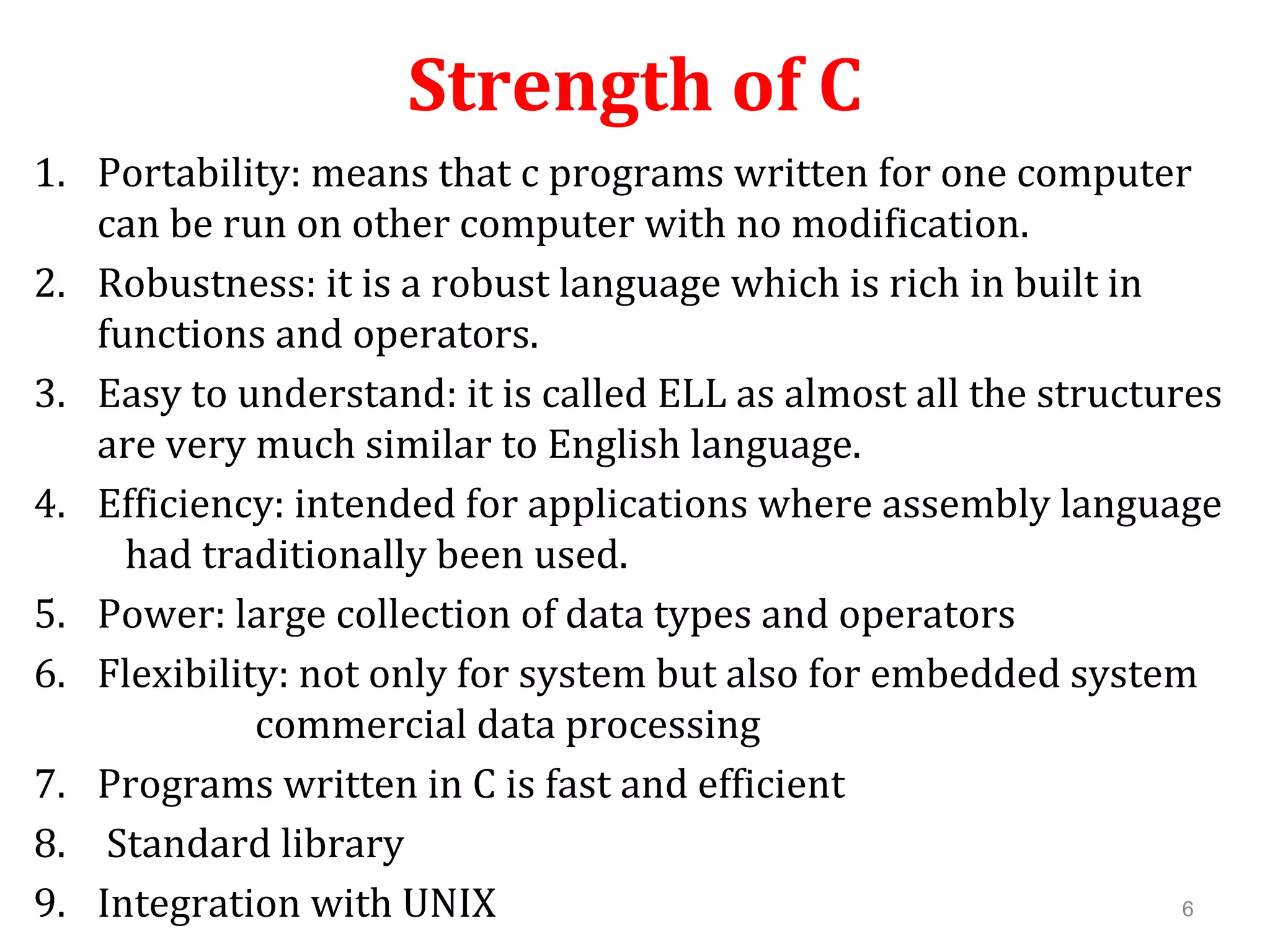
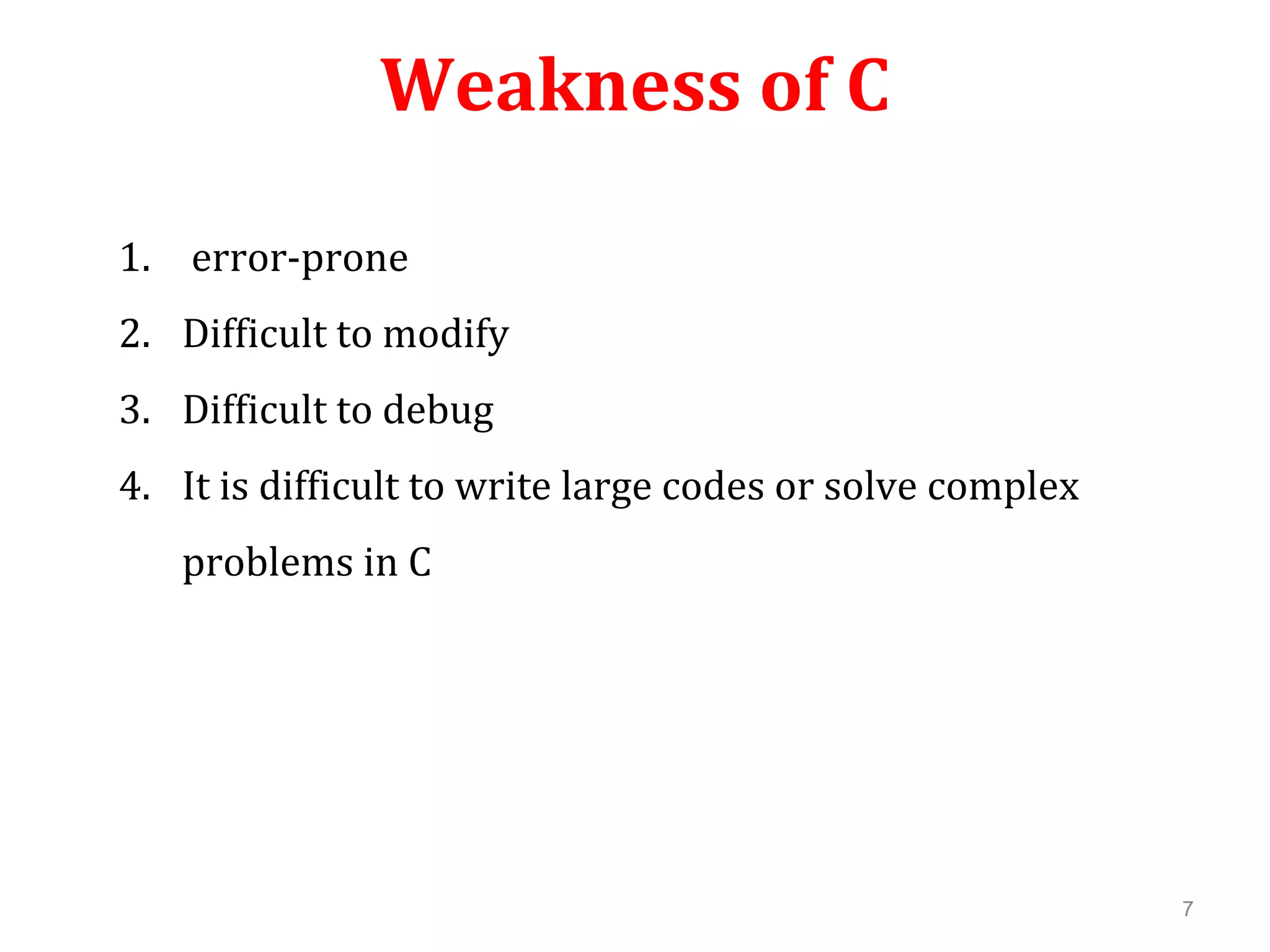
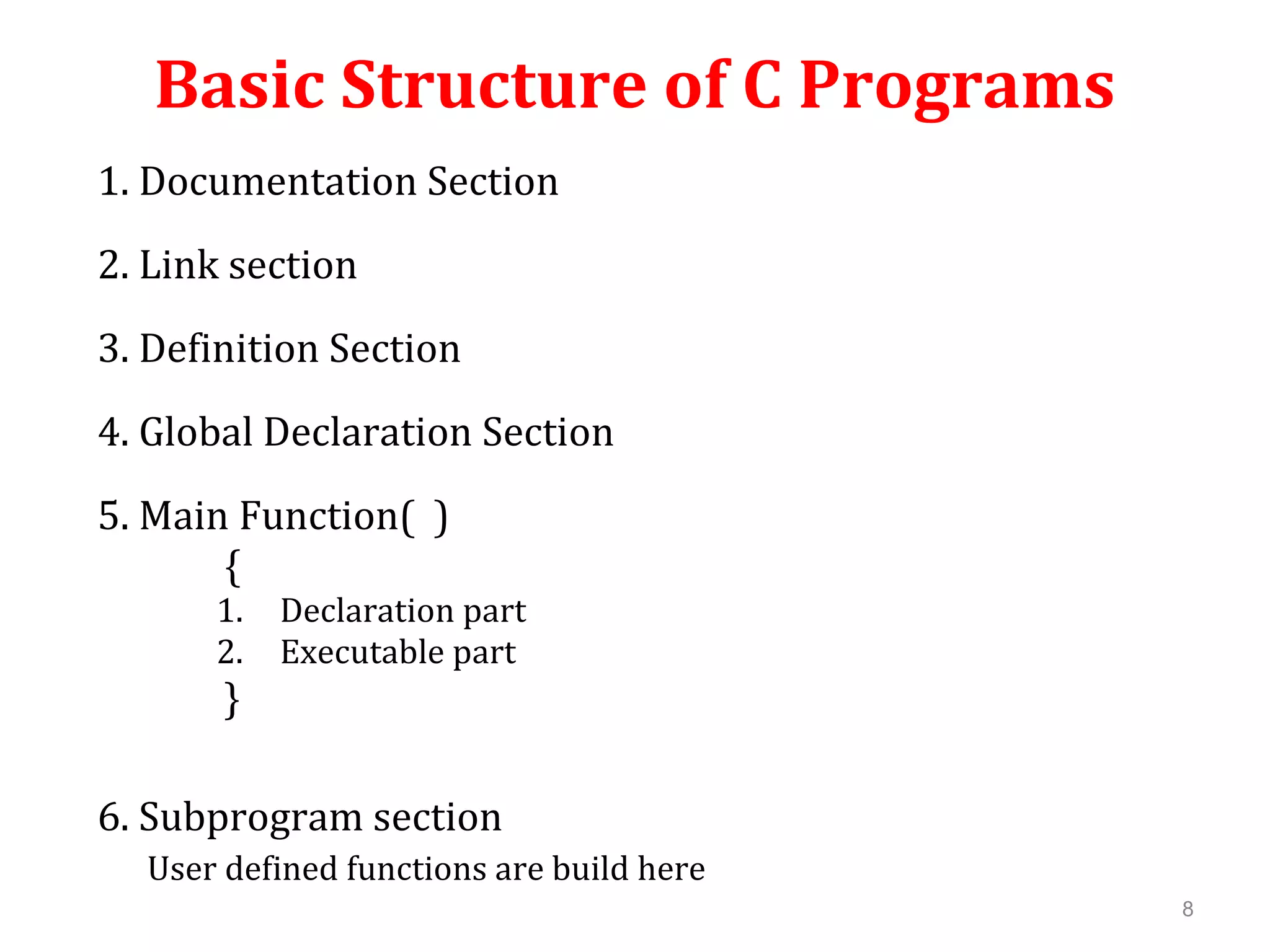
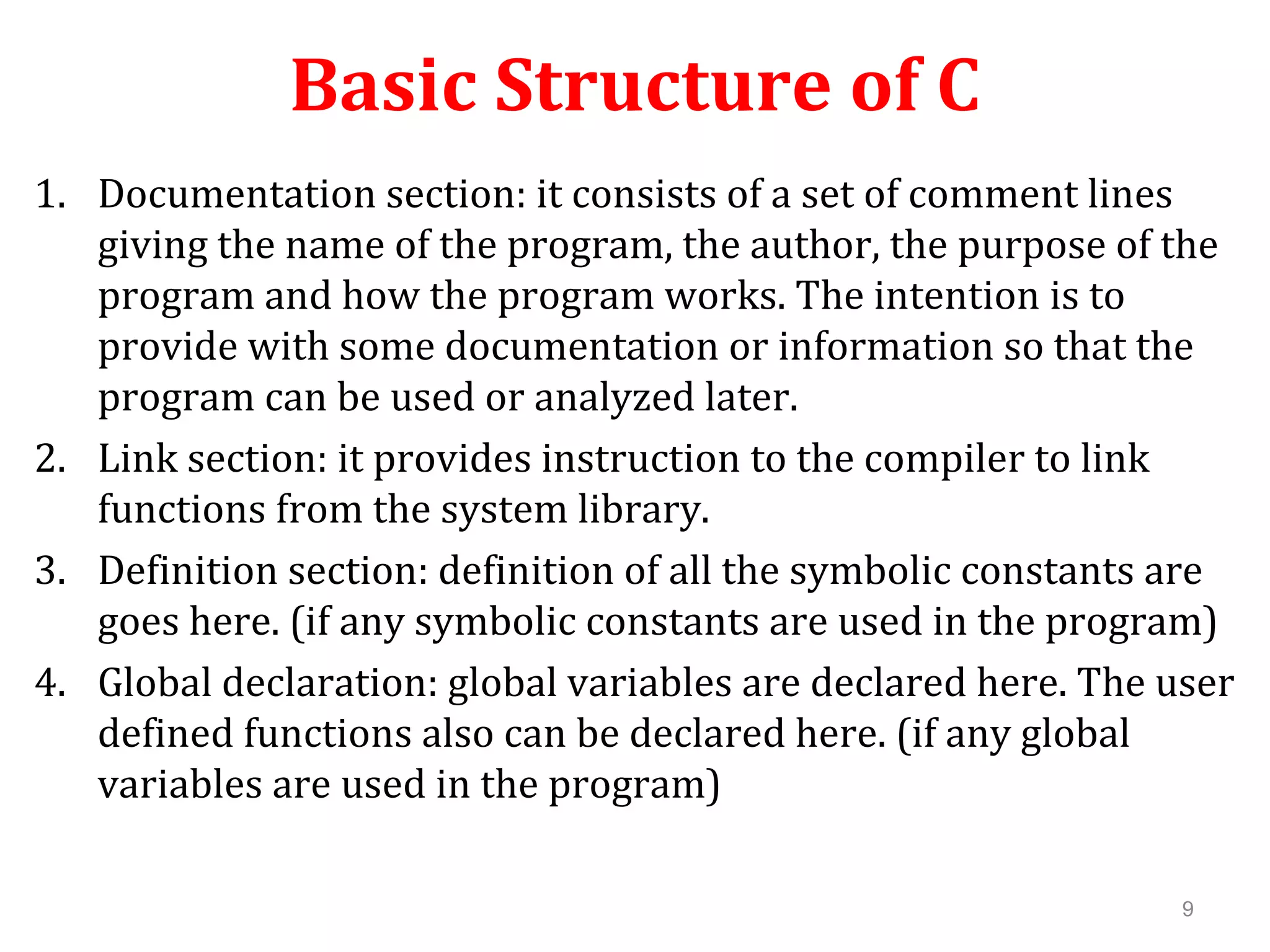
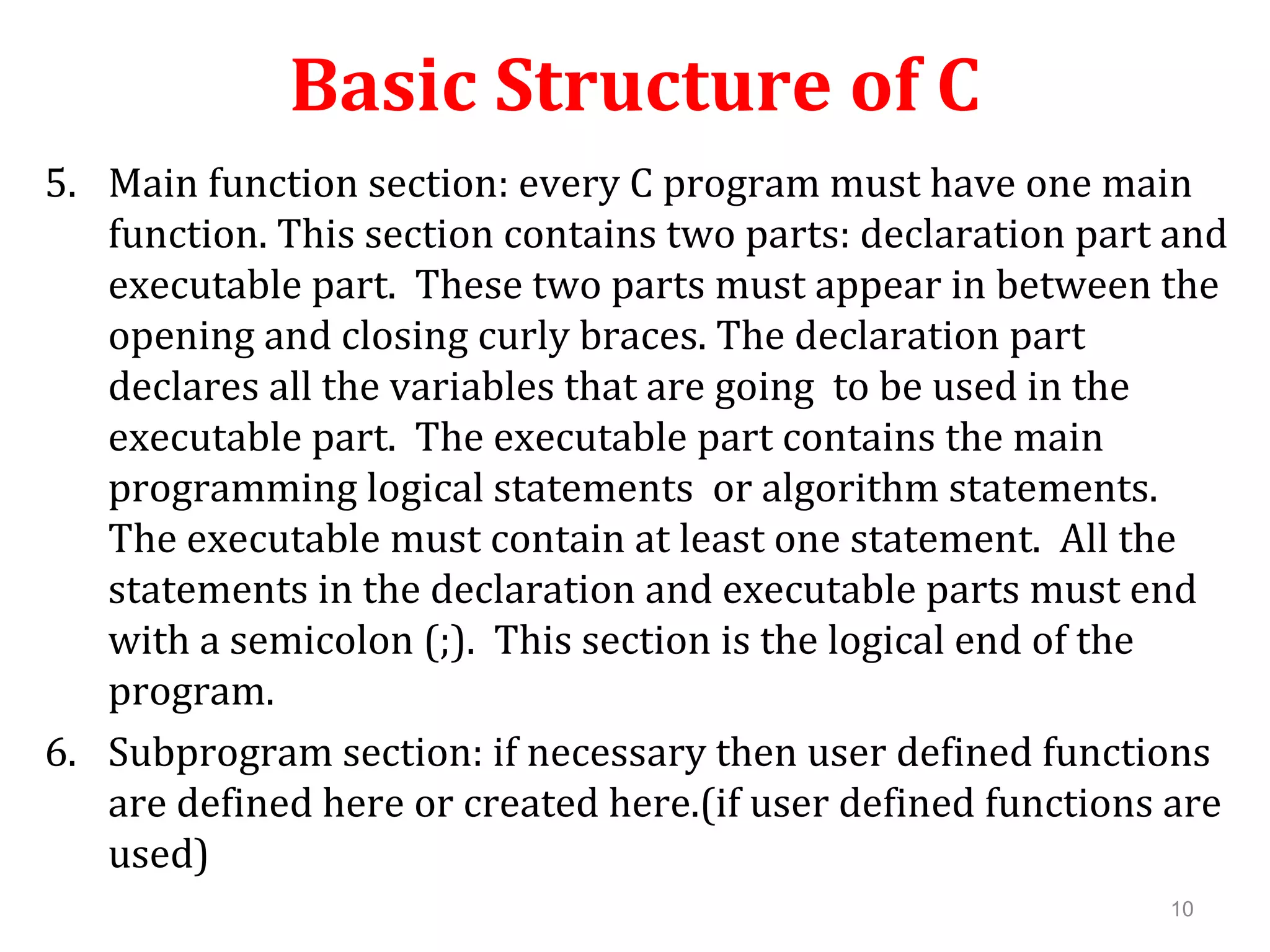
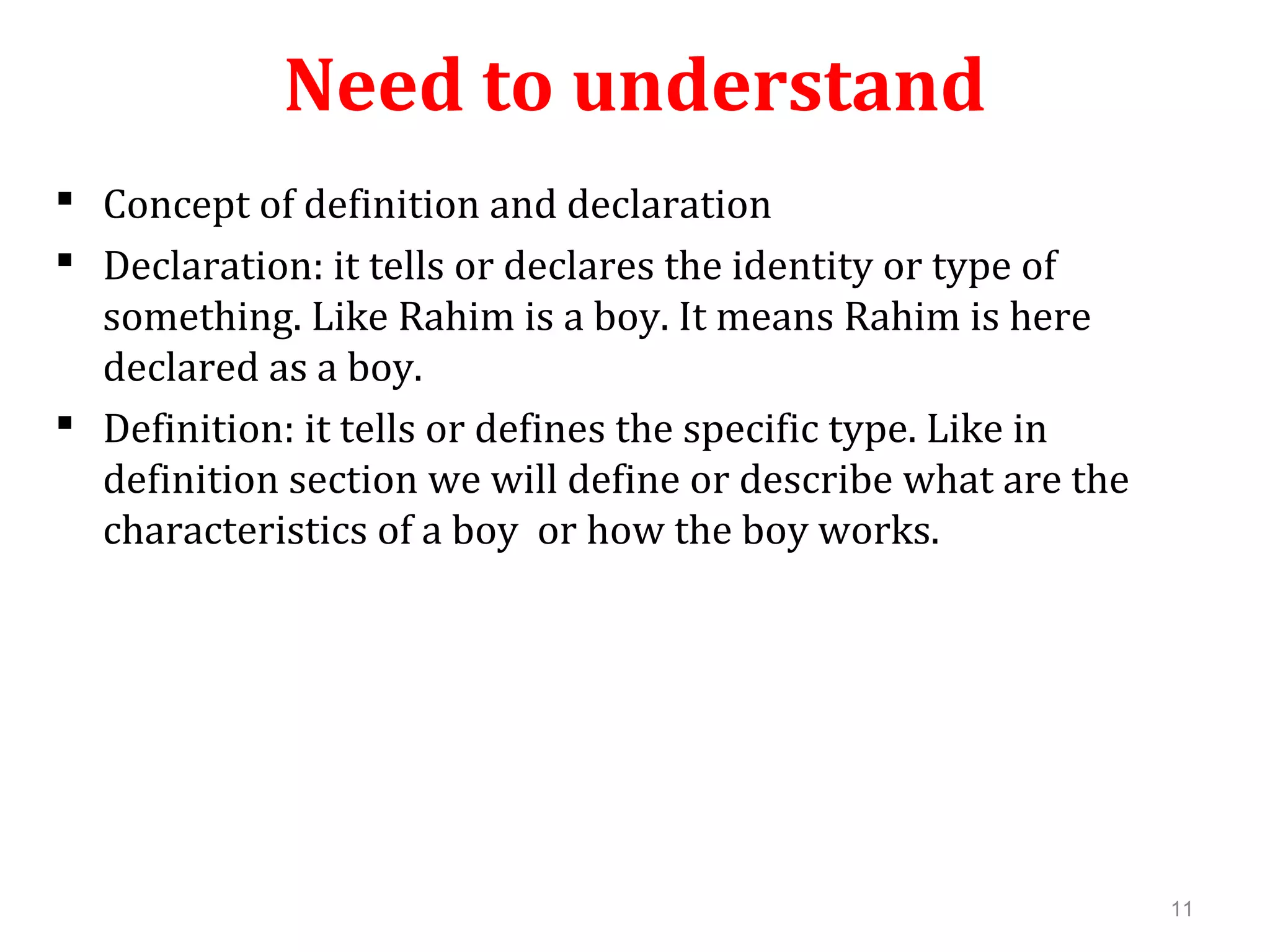
![Need to understand ( ) – is called the parenthesis { } – is called the curly braces [ ] – is called the bracket Parenthesis is used to denote a function Curly braces is used to create a body Every statement in C ends with a semicolon 12](https://image.slidesharecdn.com/introductiontoprogrammingwithc-150129234525-conversion-gate01/75/Introduction-to-programming-with-c-12-2048.jpg)
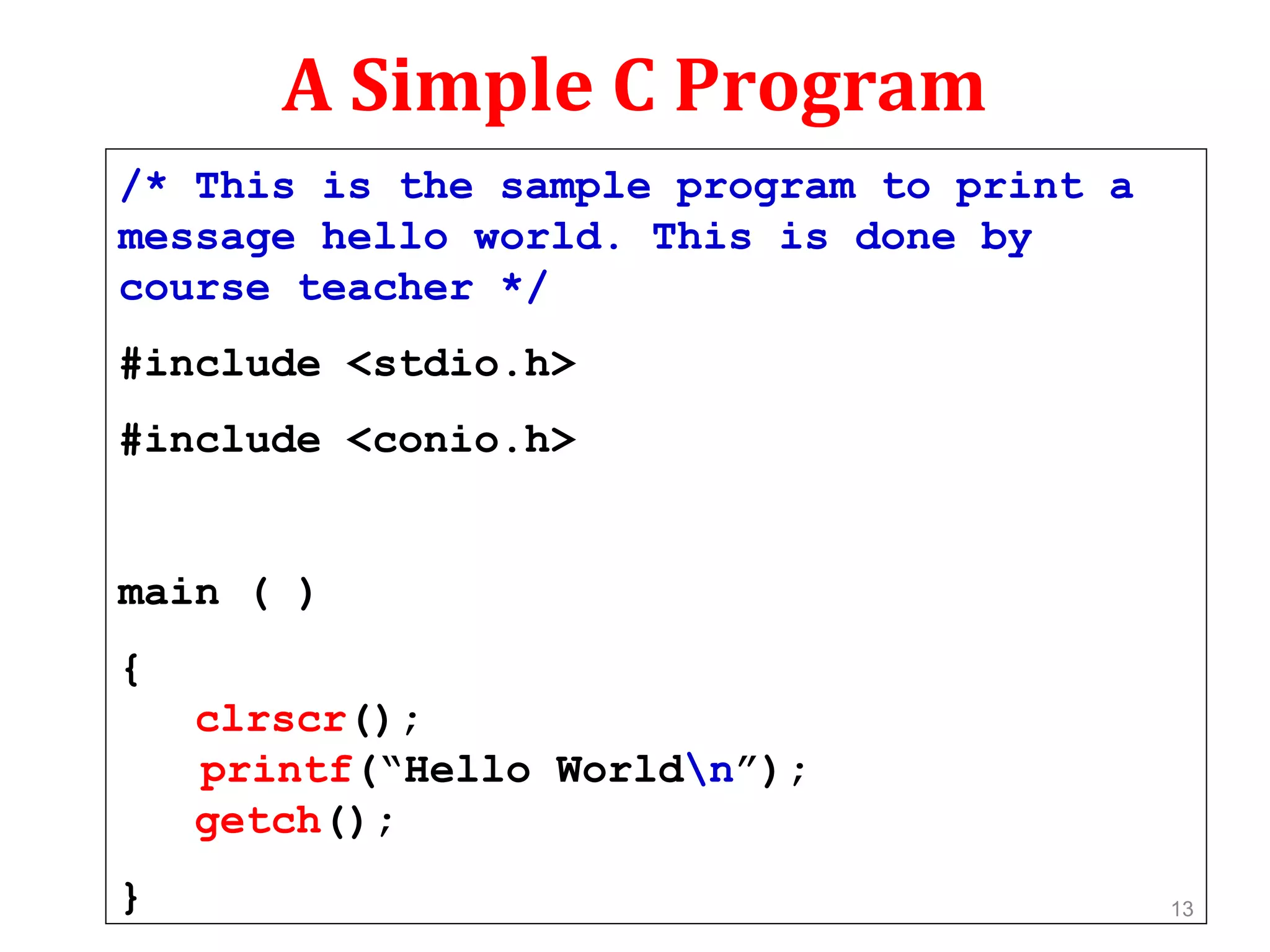
![How a C program is Executed ? A C program is executed in three phases: 1. Creating Source Code file [ Empty file(input) Source Code File(output) ] 2. Compiling [ Source Code File(input) Object File(output) ] 3. Linking [ Object File(input) Executable File(output) ] 14](https://image.slidesharecdn.com/introductiontoprogrammingwithc-150129234525-conversion-gate01/75/Introduction-to-programming-with-c-14-2048.jpg)
![How a C program is Executed ? Creating Source Code Creating Source Code Compiling Source Code Compiling Source Code Linking Object File Linking Object File [ Source Code File .c ] [ Object File .obj ] [ Executable File .exe ] [ Empty File ] 15](https://image.slidesharecdn.com/introductiontoprogrammingwithc-150129234525-conversion-gate01/75/Introduction-to-programming-with-c-15-2048.jpg)
